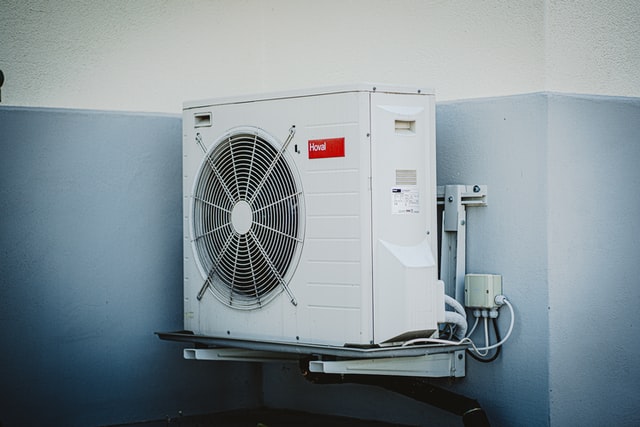HVAC Maintenance After Water Damage Restoration
 After disaster restoration, particularly water damage restoration or mold removal, your HVAC’s outer unit or the ducts will likely be filled with dust, debris, or even mold spores. It is important that you restore your HVAC system’s structural damage to reduce the risk of allergies and other health implications and prevent mold from redeveloping elsewhere.
After disaster restoration, particularly water damage restoration or mold removal, your HVAC’s outer unit or the ducts will likely be filled with dust, debris, or even mold spores. It is important that you restore your HVAC system’s structural damage to reduce the risk of allergies and other health implications and prevent mold from redeveloping elsewhere.
Your HVAC ducts are one of the top means of mold spore and dust transportation, not to mention how they can carry pathogens throughout your building. Some disaster restoration services help you recover the drywall, roof, floor, and a range of other things, but they miss out on the HVAC unit during the process.
This article will examine the potential hazards that you may be exposed to after residential or commercial disaster restoration in Charleston and signify the importance of getting your HVAC systems cleaned to avoid these hazards.
Importance of HVAC Cleaning After Disaster Restoration
The dust and debris during a natural disaster restoration service, soot and smoke during fire damage restoration, and the mold spores during water damage restoration (and mold removal) are just as damaging after the service.
As millions of these particles make their way into your HVAC system, they will settle in the ducts and swirl around the air even if the system is off. Once turned on, these particles will spread across your property, having adverse health impacts and damaging your property again.
This is not just financially costly but also becomes a matter of lost time and impeding occupant health. Cleaning the debris, smoke, soot, and mold spores during the disaster restoration process is relatively easy. All the crew has to do is sweep or vacuum them away.
However, failure to do that can lead to the following results:
- Dirt and debris may settle. With enough moisture in the air, it may harden up and form deposits that would slowly break down over time with the airflow. The dust would constantly flow through the ducts, increasing maintenance costs, electricity bills, and even attracting dust mites (causing dust allergies).
- Smoke and soot create a sticky goo once deposited. Once that happens, you may never be able to get the smell of smoke out of your property. Furthermore, the goo is acidic. The duct will start eroding with enough time, increasing maintenance and repair costs.
- Mold spores may find the moisture, warm air during winter, and the dark very inviting and may start growing inside the ducts and insulation. The spores will also spread throughout the property, requiring extensive mold removal service or complete duct replacement. These spores may also cause allergies or other health issues in the long run.
HVAC cleaning is an essential service that the restoration crew should perform at all costs after any sort of disaster restoration – unless there is sufficient reason to believe that the ducts have not been contaminated.
Cleaning Your HVAC Systems Yourself
You can clean your HVAC systems yourself as well. Still, without professional tools and expertise, there is a perfect chance that you may miss something (especially after commercial or residential disaster restoration). Some immediate steps that you can and should take include:
- Clean the entire duct system
- Clean all HVAC surfaces, such as the fan blades, air vents, etc.
- Replace air filters immediately.
- Check drip pans and make sure there are no clogs.
Professional HVAC Cleaning After Disaster Restoration
Industrial tools are required to ensure that your HVAC system has been cleaned. HEPA-filtered vacuum cleaners are a prime example of the tools needed. These vacuums may prove very expensive for residential or commercial needs compared to hiring professionals.
Professional HVAC system cleaning after structural damage can be divided into two distinct steps;
- Cleaning The Duct. This primarily involves removing the ducts and cleaning every corner for dust, debris, smoke, soot, mold spores, and even offering sanitization services to remove all pathogens within. You are most likely going to cobwebs and dust balls in the ducts, which contribute directly towards depreciating the air quality of your place. Once all contaminants have been cleaned, experts may also deodorize the ducts. However, this step is only necessary if there is mold buildup in the ducts.
- Cleaning The Coil. This involves diving deep into your air conditioner and remove any buildup. Mold, smoke, and soot are the primary culprits here, restricting airflow and increasing the utility bill. Sometimes, external debris and hair also make their way onto the coil, which may result in damage if not cleaned immediately.
You must partner with a disaster restoration company that is known for its thoroughness and its focus on quality. 911 Restoration is a prime example of a company dedicated to improving your lives and offering the best possible service at all times.
Call 911 Restoration of Charleston today to learn more about our process or for a quote. We offer a FREE quote for all property owners for their disaster restoration needs, whether water damage restoration, mold removal, fire damage restoration, or more.



